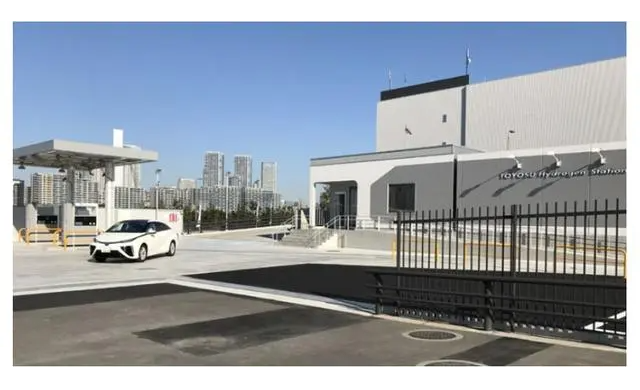- English
- Español
- Português
- русский
- Français
- 日本語
- Deutsch
- tiếng Việt
- Italiano
- Nederlands
- ภาษาไทย
- Polski
- 한국어
- Svenska
- magyar
- Malay
- বাংলা ভাষার
- Dansk
- Suomi
- हिन्दी
- Pilipino
- Türkçe
- Gaeilge
- العربية
- Indonesia
- Norsk
- تمل
- český
- ελληνικά
- український
- Javanese
- فارسی
- தமிழ்
- తెలుగు
- नेपाली
- Burmese
- български
- ລາວ
- Latine
- Қазақша
- Euskal
- Azərbaycan
- Slovenský jazyk
- Македонски
- Lietuvos
- Eesti Keel
- Română
- Slovenski
- मराठी
- Srpski језик
Japan goes after hydrogen! It plans to invest more than $100 billion in hydrogen over the next 15 years
2023-06-08
The Japanese government announced on Tuesday (June 6) that it has revised a strategy on hydrogen energy, vigorously developing the fuel as part of efforts to reduce carbon emissions.
Because hydrogen does not emit carbon dioxide or other greenhouse gases when burned, thermal power plants can significantly reduce emissions by burning hydrogen or a mixture of hydrogen and natural gas.
Countries around the world are racing to develop hydrogen energy as a means of reducing emissions in some of the hardest industries to decarbonise, such as steel production and chemical manufacturing.
Strategy revision
In 2017, Japan released its first Hydrogen strategy document, the Basic Strategy for Hydrogen, which initially called for an increase in the country's hydrogen supply from 2 million tons to 3 million tons per year by 2030.
Japan's Ministry of Economy, Trade and Industry on Tuesday announced a revised strategy to increase hydrogen supply to 12 million tons per year by 2040. And to reach the goal of around 20 million tons by 2050, when Japan expects the global hydrogen market to reach $2.5 trillion in annual revenue.
To achieve these goals, Japan plans to invest 15 trillion yen (about $107.5 billion) in hydrogen energy projects over the next 15 years to establish a hydrogen-related supply chain.
Of the 15 trillion yen, the government plans to provide 6 to 8 trillion yen, with the rest coming from private companies, authorities said.

Zero emission efforts
But until now, Japan has mainly relied on fossil fuels to produce hydrogen (gray hydrogen). The production cost of gray hydrogen is low and the hydrogen production technology is simple, but there are emissions such as carbon dioxide in the production process.
Blue hydrogen, which is less polluted, and green hydrogen, which is pollution-free, are more advanced in hydrogen production technology, and the relative production cost is higher. Blue hydrogen uses carbon capture, utilization and storage (CCUS) technology to capture carbon dioxide in the process of gray hydrogen preparation. Green hydrogen is obtained by electrolysis of water using renewable energy sources.
Based on the consideration of reducing carbon emissions, the revised plan prioritizes nine strategic areas, including the vigorous development of water electrolysis equipment, fuel storage batteries and large tankers for transporting hydrogen.
The revised strategy also sets a target for Japanese affiliates at home and abroad to increase the amount of hydrogen produced by electrolysis to 15 gigawatts by 2030, from less than 1 gigawatt now.
The government also wants to support the expansion of the ammonia and synthetic fuel industries. The government is still drafting legislation to support the construction of the necessary infrastructure and supply chain for the commercial use of pure hydrogen and ammonia.
At a Hydrogen council meeting with industry leaders last week, Japanese Prime Minister Fumio Kishida said Japan aims to become a "zero-emission community in Asia," contributing Japanese know-how in hydrogen, ammonia and other decarbonization technologies.





